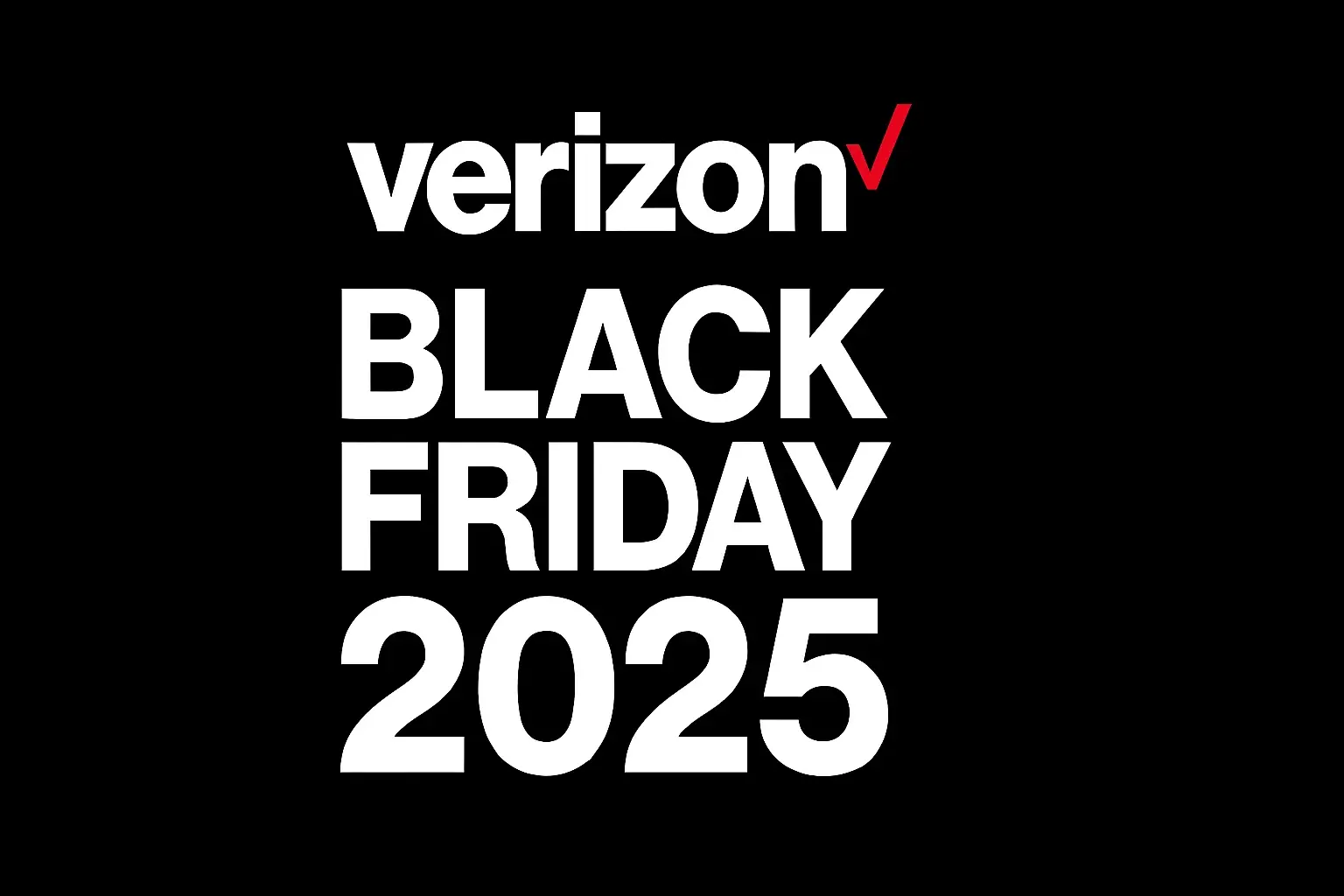What Is Verizon Fios Internet?

Discover Verizon Fios Internet in 2025: a comprehensive guide to its fiber-optic technology, speed tiers, pricing, availability, and competitive advantages. Learn how Fios delivers symmetrical upload/download speeds, its impact on streaming, gaming, and remote work, and how to choose the best plan for your needs. Understand its strengths and weaknesses compared to cable and DSL alternatives.
[Section 1: What is Verizon Fios Internet? A Deep Dive into Fiber Optics]
In the rapidly evolving digital landscape of 2025, reliable and high-speed internet is no longer a luxury but a fundamental necessity. Whether you're a remote worker juggling video conferences, a student immersed in online learning, a gamer demanding lag-free experiences, or a family streaming 4K content simultaneously, your internet connection is the backbone of your digital life. Among the leading providers, Verizon Fios Internet stands out, primarily due to its commitment to fiber-optic technology. But what exactly is Verizon Fios, and why has it garnered such a strong reputation in the competitive broadband market? This article will provide an in-depth exploration of Verizon Fios, dissecting its technology, service offerings, advantages, and how it stacks up against other internet options available to consumers in 2025.
Verizon Fios, which stands for Fiber Optic Service, is Verizon's brand of broadband internet access that utilizes a fiber-optic network to deliver data. Unlike traditional cable or DSL internet that relies on copper wires, Fios uses thin strands of glass or plastic to transmit data as pulses of light. This fundamental difference in infrastructure is the key to Fios's superior performance. As of 2025, fiber-optic networks are widely recognized as the gold standard for internet connectivity, offering unparalleled speed, reliability, and capacity. Verizon has been a significant player in expanding this fiber infrastructure, bringing its Fios service to millions of households across its service areas.
The core promise of Verizon Fios is delivering internet speeds that are not only fast but also consistent. This consistency is largely attributed to the inherent advantages of fiber optics. In 2025, with the increasing demand for bandwidth-intensive applications like augmented reality (AR), virtual reality (VR), cloud gaming, and high-definition video conferencing, the limitations of older internet technologies are becoming more apparent. Fiber optics, with their ability to carry data at the speed of light, are uniquely positioned to meet these growing demands. Verizon Fios aims to provide a future-proof internet solution that can adapt to the ever-increasing digital needs of households and businesses.
This article will delve into the specifics of what makes Verizon Fios a compelling choice for many consumers. We'll explore the underlying technology, examine the various plans and pricing structures available in 2025, discuss where Fios is accessible, and conduct a thorough comparison with competing services. Furthermore, we'll offer practical advice on how to get the most out of your Fios connection and look ahead to the future of fiber internet. By the end of this comprehensive guide, you'll have a clear understanding of whether Verizon Fios Internet is the right solution for your connectivity needs in 2025.
[Section 2: Understanding the Technology: The Power of Fiber Optics]
At the heart of Verizon Fios Internet lies its revolutionary use of fiber-optic cables. To truly appreciate what Fios offers, it's essential to understand how fiber optics work and why they are superior to the coaxial cables used by cable internet providers and the copper phone lines used by DSL providers.
How Fiber Optics Transmit Data
Fiber-optic cables are made up of extremely thin strands of glass or plastic, each about the diameter of a human hair. These strands are bundled together within a protective sheath to form a fiber-optic cable. Data is transmitted through these strands in the form of light pulses. A laser or LED at the sending end converts electrical signals into light pulses, which then travel through the fiber-optic cable at incredible speeds, essentially the speed of light. At the receiving end, a photodiode converts these light pulses back into electrical signals that your devices can understand.
Key Advantages of Fiber Optics
The physics of light transmission through glass offers several significant advantages over traditional copper-based technologies:
- Symmetrical Speeds: This is perhaps the most defining characteristic of fiber-optic internet like Fios. Unlike cable internet, which typically offers much slower upload speeds than download speeds, fiber connections provide symmetrical speeds. This means your upload speed is the same as your download speed. In 2025, this is crucial for activities like uploading large files, participating in high-quality video calls, live streaming, and cloud backups. For example, a 500 Mbps download speed on Fios will also come with 500 Mbps upload speed, whereas a cable connection with 500 Mbps download might only offer 20-50 Mbps upload.
- Higher Bandwidth Capacity: Fiber-optic cables can carry significantly more data than copper wires. This higher capacity means that Fios networks are less likely to experience slowdowns during peak usage hours when many people in a neighborhood are online. The light signals are not susceptible to the same congestion issues that plague cable networks.
- Lower Latency: Latency refers to the delay between sending a request and receiving a response. Fiber optics inherently have lower latency than copper. This is vital for real-time applications such as online gaming, where even a few milliseconds of delay can impact performance, and for seamless video conferencing.
- Immunity to Interference: Copper wires are susceptible to electromagnetic interference (EMI) from sources like power lines, electrical appliances, and even radio signals. This interference can degrade signal quality and reduce speeds. Fiber-optic cables, transmitting light, are immune to EMI, ensuring a more stable and consistent connection.
- Greater Reliability and Durability: While fiber-optic cables are delicate in their individual strands, the overall infrastructure is robust. They are less prone to corrosion than copper and can withstand a wider range of environmental conditions, leading to fewer service interruptions.
- Future-Proof Technology: The infrastructure of fiber optics is built for the future. As internet speeds continue to increase, fiber is the only technology capable of scaling to meet those demands without requiring a complete overhaul of the physical network. Verizon's investment in Fios positions it well for the continued growth of data consumption in the coming years.
Verizon Fios typically brings fiber optic cables directly to the home (FTTH - Fiber to the Home) or at least to a neighborhood node (FTTN - Fiber to the Node), which is still a significant upgrade over older technologies. This direct fiber connection is what enables the exceptional performance characteristics associated with Fios.
[Section 3: Verizon Fios Internet Plans and Pricing in 2025]
Verizon Fios offers a range of internet plans designed to cater to different user needs and budgets in 2025. The core appeal remains its fiber-optic technology, which translates into symmetrical upload and download speeds across all tiers. Understanding these plans is crucial for making an informed decision.
Typical Fios Internet Speed Tiers (as of early 2025)
Verizon often adjusts its offerings, but common speed tiers include:
- Fios Home 300 Mbps: This plan is suitable for individuals or small households with moderate internet usage. It can comfortably support streaming in HD, online browsing, email, and casual online gaming. The symmetrical 300 Mbps upload speed is a significant advantage for tasks like uploading photos or short videos.
- Fios Home 500 Mbps: A popular choice for many households, this tier offers a significant performance boost. It's ideal for families with multiple users, simultaneous streaming of 4K content, robust online gaming, and frequent video conferencing. The 500 Mbps upload speed makes it excellent for content creators and those who regularly upload large files.
- Fios Home Gigabit Connection (up to 1 Gbps): For power users, this plan provides the ultimate speed experience. It's designed for households with extremely high internet demands, such as multiple users streaming 4K/8K content simultaneously, demanding online gamers, users of VR applications, and professionals who frequently work with massive datasets or require rapid cloud syncing. The near-instantaneous upload and download speeds of up to 1 Gbps (which is 1000 Mbps) offer unparalleled performance.
Pricing Structure and Considerations
Verizon Fios pricing can vary based on location, current promotions, and whether you bundle services. As of early 2025, you can generally expect the following:
- Monthly Rates: Advertised prices often reflect promotional rates for a limited period (e.g., 12 or 24 months). After this period, the price typically increases to the standard rate. It's essential to check the fine print for long-term cost implications.
- No Annual Contracts: A significant advantage of Fios is that many plans are offered without annual contracts, providing flexibility. However, some promotional pricing might be tied to longer commitments.
- Equipment Rental Fees: While Verizon often includes a modem/router (ONT - Optical Network Terminal) with Fios installations, there might be a monthly fee for advanced Wi-Fi routers. Some users opt to purchase their own compatible routers to avoid these fees, though this can sometimes impact support.
- Installation Fees: Professional installation typically incurs a one-time fee, though Verizon frequently offers free installation promotions. Self-installation might be an option for some customers, potentially saving on costs.
- Bundling Options: Verizon Fios often offers attractive bundles that combine internet, TV (Fios TV), and phone services. Bundling can sometimes lead to overall cost savings compared to subscribing to each service individually. These packages are worth considering if you require multiple services.
- Data Caps: A major selling point for Verizon Fios is that it generally does not impose data caps on its internet plans. This is a stark contrast to many satellite and some fixed wireless providers, and even some cable providers who may have data limits. This "unlimited" data policy is a significant benefit for heavy internet users.
For the most accurate and up-to-date pricing and plan details in your specific area for 2025, it is always recommended to visit the official Verizon Fios website or contact their sales department directly. Prices and promotions are dynamic and can change frequently.
[Section 4: Availability: Where Can You Get Verizon Fios?]
While Verizon Fios offers a superior internet experience, its availability is a significant limiting factor for many consumers in 2025. Unlike cable internet, which has a more widespread infrastructure across the United States, Fios is primarily concentrated in specific geographic regions where Verizon has invested heavily in deploying its fiber-optic network.
Key Geographic Footprint
Verizon Fios is predominantly available in the Northeastern and Mid-Atlantic regions of the United States. Major metropolitan areas and their surrounding suburbs within these regions are the primary service zones. Some of the most well-known Fios service areas include:
- New York (including New York City and surrounding suburbs)
- New Jersey
- Pennsylvania (especially Philadelphia area)
- Massachusetts (including Boston area)
- Rhode Island
- Delaware
- Maryland
- Virginia (primarily Northern Virginia)
- Washington D.C.
It's important to note that even within these states, Fios availability can be patchy. Service is often concentrated in more densely populated urban and suburban areas. Rural communities or even some less developed parts of major metropolitan areas might not have Fios access.
How to Check Availability
The most reliable way to determine if Verizon Fios is available at your specific address is to use Verizon's online availability checker. This tool requires you to enter your street address and zip code. You can typically find this feature on the main Verizon Fios website.
When checking availability, be aware of the following:
- Accuracy: The online checker is generally accurate, but it's always a good idea to confirm with a Verizon representative if you have any doubts, especially if the checker indicates borderline availability.
- "Future Availability": Sometimes, Verizon might indicate that Fios is "coming soon" to an area. This usually means they are in the process of expanding their fiber network. You can often sign up to be notified when service becomes available.
- Alternative Verizon Services: If Fios is not available, Verizon also offers other internet services, such as 5G Home Internet or LTE Home Internet, which use wireless technology. While these can be good alternatives in some areas, they do not offer the same performance characteristics as Fios fiber.
The limited geographic footprint of Fios is a primary reason why many consumers must consider alternative providers like Xfinity, Spectrum, or AT&T, which utilize different network technologies and have broader coverage maps.
[Section 5: Verizon Fios vs. The Competition: A 2025 Comparison]
In 2025, consumers have a variety of internet technologies to choose from, primarily cable, DSL, fiber optics, and increasingly, fixed wireless. Verizon Fios, being a fiber-optic service, naturally competes with these other options. Understanding its strengths and weaknesses relative to the competition is key.
| Feature | Verizon Fios (Fiber) | Cable Internet (e.g., Xfinity, Spectrum) | DSL Internet (e.g., AT&T DSL) |
|---|---|---|---|
| Technology | Fiber Optics (FTTH/FTTN) | Coaxial Cable | Copper Phone Lines |
| Download Speeds | Up to 1 Gbps (Gigabit) and higher | Up to 1 Gbps or more, but often lower tiers are more common | Typically 10 Mbps to 100 Mbps, rarely exceeding 150 Mbps |
| Upload Speeds | Symmetrical (e.g., 300/300 Mbps, 500/500 Mbps, 1000/1000 Mbps) | Asymmetrical (significantly slower than download, e.g., 500/20 Mbps) | Asymmetrical (very slow, often less than 10 Mbps) |
| Reliability & Consistency | Very High; less prone to congestion and interference | Good, but can experience slowdowns during peak hours due to shared bandwidth | Variable; performance degrades with distance from the central office and line quality |
| Latency | Very Low | Moderate | Higher, especially over longer distances |
| Data Caps | Typically None | May have data caps or throttling policies, though less common on higher tiers | Rarely have data caps, but speeds are often too slow for heavy usage anyway |
| Availability | Limited (primarily Northeast/Mid-Atlantic) | Widespread across much of the US | Widespread, especially in areas not served by cable or fiber |
| Pricing | Can be competitive, especially with bundles, but often higher upfront for top speeds | Often competitive, with various promotional offers; can be cheaper for lower speeds | Generally the cheapest option, but speeds are very limited |
Verizon Fios vs. Cable Internet
The primary advantage of Fios over cable is its symmetrical speeds and immunity to local network congestion. If you frequently upload large files, stream live video, or engage in competitive online gaming, Fios offers a superior experience. Cable internet, while widely available and offering high download speeds, is limited by its asymmetrical nature and potential for slowdowns during peak hours.
Verizon Fios vs. DSL Internet
This is less of a direct comparison in terms of performance. Fios is in a completely different league than DSL. DSL internet, using aging copper phone lines, offers significantly lower speeds and is highly susceptible to distance and interference. Fios is the clear winner for anyone seeking high-speed, reliable internet.
Verizon Fios vs. Fixed Wireless (including Verizon 5G Home)
Fixed wireless services, like Verizon's own 5G Home Internet, offer an alternative where wired broadband is unavailable or too expensive. 5G Home Internet can provide competitive speeds and is easier to deploy. However, its performance can be more variable than Fios, influenced by signal strength, network congestion, and weather. Fios generally offers more consistent speeds and lower latency, making it preferable for demanding applications if available.
In summary, Verizon Fios excels in speed, symmetry, reliability, and low latency, making it a top-tier internet service. Its main drawback is its limited availability. If Fios is an option for you, it's often the best choice for a premium internet experience in 2025.
[Section 6: Maximizing Your Verizon Fios Experience: Tips and Best Practices]
Once you have Verizon Fios Internet installed, there are several steps you can take to ensure you're getting the most out of your service, optimizing performance, and maintaining a stable connection. These best practices are relevant for users of all speed tiers in 2025.
1. Choose the Right Speed Tier for Your Needs
Don't overpay for more speed than you need, but also don't undershoot and experience frustration. Assess your household's typical internet usage. If you have multiple users, stream 4K content regularly, game online, or work from home with frequent video calls, a higher speed tier (500 Mbps or Gigabit) is advisable. For lighter usage, 300 Mbps might suffice. Regularly review your usage patterns and consider upgrading or downgrading if your needs change.
2. Optimize Your Wi-Fi Network
Even with a powerful Fios connection, a weak Wi-Fi signal can bottleneck your speeds. Consider these Wi-Fi best practices:
- Router Placement: Position your Wi-Fi router in a central, open location in your home, away from obstructions like thick walls, metal objects, and large appliances. Avoid placing it in corners or basements.
- Use a Quality Router: If you're using Verizon's provided router, ensure it's a modern model supporting the latest Wi-Fi standards (e.g., Wi-Fi 6 or Wi-Fi 6E). If you experience issues or need better coverage, consider investing in a high-quality third-party router.
- Mesh Wi-Fi Systems: For larger homes or homes with dead zones, a mesh Wi-Fi system can provide consistent coverage throughout your entire house by using multiple nodes that work together.
- Secure Your Network: Always use a strong, unique password for your Wi-Fi network (WPA2 or WPA3 encryption) to prevent unauthorized access, which can slow down your connection and pose security risks.
- Update Router Firmware: Regularly check for and install firmware updates for your router. These updates often include performance improvements and security patches.
3. Leverage Symmetrical Upload Speeds
The symmetrical upload speeds of Fios are a major advantage. Ensure you're utilizing this for:
- Cloud Backups: Services like Google Drive, Dropbox, or iCloud will sync your files much faster.
- Video Conferencing: Enjoy smoother, higher-resolution video calls without choppy audio or pixelated video.
- Content Creation: Uploading videos to YouTube, Twitch, or other platforms will be significantly quicker.
- Online Gaming: While download speed is crucial, high upload speeds contribute to a more stable connection for online multiplayer games.
4. Utilize Wired Connections When Possible
For devices that require the absolute fastest and most stable connection (e.g., gaming consoles, desktop computers used for critical work, smart TVs for 4K streaming), connect them directly to the router using an Ethernet cable. While Wi-Fi has improved dramatically, a wired connection will always offer the lowest latency and highest consistent speeds.
5. Monitor Your Speeds Periodically
Use reputable speed test websites (like Speedtest.net by Ookla) to check your internet speeds regularly. Perform tests at different times of the day and from various devices. Compare the results to the speed tier you are paying for. If you consistently see speeds significantly lower than advertised, it might indicate an issue with your equipment, your home network, or potentially the Verizon service, warranting a call to customer support.
6. Understand Your Equipment
Verizon Fios typically involves an Optical Network Terminal (ONT) installed at your home, which converts the fiber optic signal to an electrical one. This ONT is then connected to your router. Familiarize yourself with the status lights on your ONT and router, as they can provide clues if there's a connection problem. If you opt for your own router, ensure it's compatible with Fios and set up correctly.
7. Consider Bundling for Value
If you also need TV or phone services, investigate Verizon's bundled packages. Bundling can often provide cost savings and simplifies your billing. Ensure the bundled services meet your actual needs to avoid paying for unused features.
By implementing these tips, you can ensure your Verizon Fios Internet connection performs optimally, providing a seamless and reliable digital experience for all your activities in 2025 and beyond.
[Section 7: Advanced Considerations for Power Users]
For users who push the boundaries of their internet connection – gamers, content creators, IT professionals, or those running home servers – Verizon Fios offers a robust platform. However, there are advanced considerations to maximize its potential.
1. Custom Router Configurations and Static IPs
While Verizon's provided routers are generally capable, power users might benefit from more advanced control offered by third-party routers. This can include:
- Advanced QoS (Quality of Service): Fine-tuning bandwidth allocation to prioritize specific applications or devices (e.g., ensuring gaming traffic always gets priority).
- VPN Capabilities: Setting up VPN clients or servers directly on the router for network-wide security or remote access.
- Port Forwarding and DMZ: Essential for hosting game servers, accessing home security cameras remotely, or running specific applications that require direct external access.
Regarding IP addresses, Fios typically assigns dynamic IP addresses. For users who need a consistent, publicly accessible IP address for hosting servers or specific network configurations, Verizon may off





